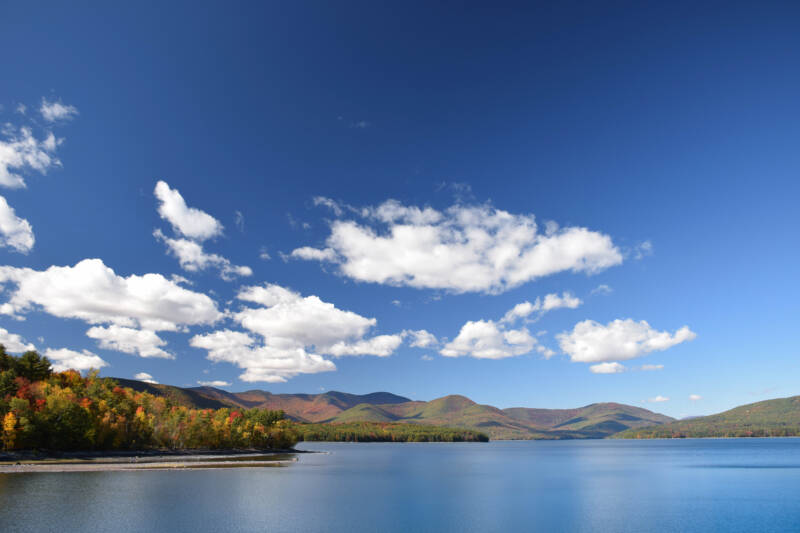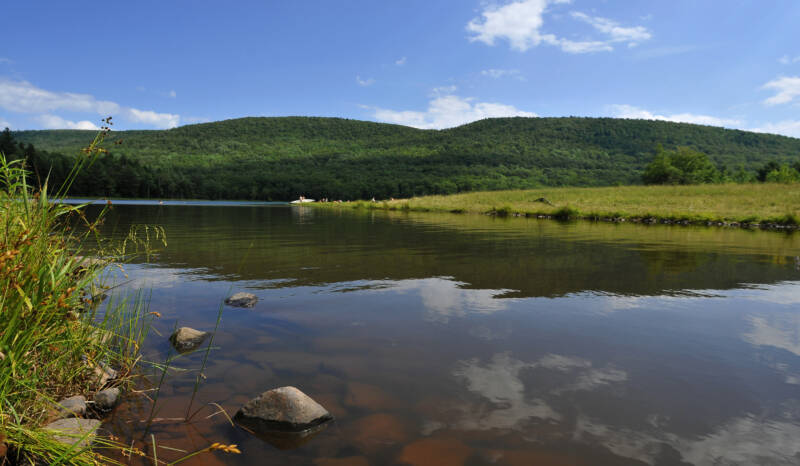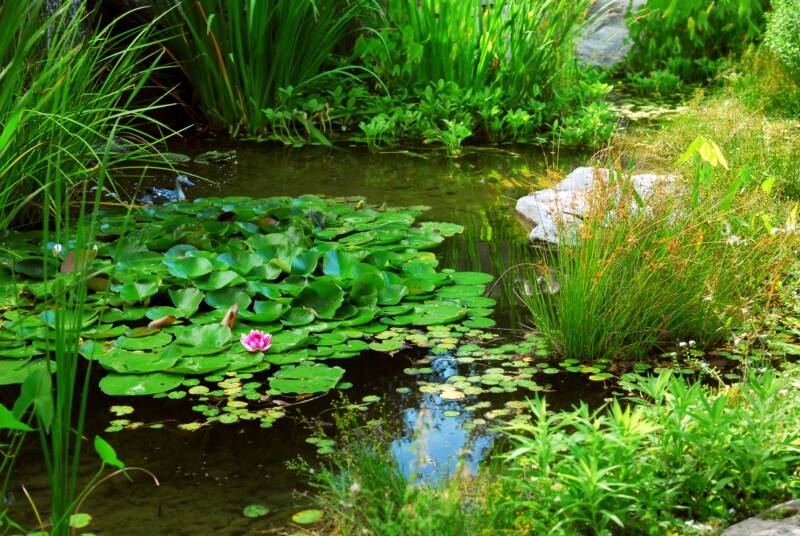If you enjoy the outdoors, you’ve most likely visited local, state, and national parks. Often one of the main attractions is a pond or lakes.

Have you ever wondered what’s the difference between a lake and a pond?
You may think it’s only related to size. Most people do, but they’re wrong! Here’s why.
[toc]
Definition of a lakes
The science of studying freshwater is called limnology. There is no official scientific definition of a lake or pond, but in general, deep large bodies of water are called lakes.
Lakes are often fed by streams and underground springs. Water flows in, through, and out of the lake.
Lakes are often deep enough to “stratify.” Have you ever been swimming and felt a sudden drop in water temperature near your feet? That’s thermal stratification! The water layers separate based on temperature. The warmer water stays at the top, and colder water drops to the bottom.
Lakes have waves
Have you ever been on a lake or pond during a storm? The wind can cause waves to form on the water surface.
Lakes tend to have a larger surface area, allowing for taller waves to form. Waves less than 12 inches in height are considered small and typical of ponds.
Large lakes can have significantly taller waves that can really rock the boat!
Definition of a ponds

Ponds tend to be shallower than lakes, but they can still be quite large in surface area.
The shallow depth allows sunlight to penetrate to the bottom of the pond. This permits rooted aquatic plants to thrive throughout the pond.
While large, deep lakes can have plants growing around a shallow shoreline, you won’t find plants growing in the deep water. It is often too dark and cold for most plants to survive.
Ponds will often have water lilies and other rooted plants growing farther away from the shoreline. They can even be found in the center of the pond.

Do Lakes and ponds leak?
Have you ever wondered why lakes and ponds don’t simply drain through the ground?
In some cases, there is a dense layer of clay that seals the bottom of the pond or lake. The clay reduces the amount of water that seeps into the ground.
You may think a sandy bottom won’t hold water, but it can if the underground water table is shallow. The truth is all ponds and lakes lose water through seepage.
Losing water from evaporation
Lakes and ponds can lose a lot of water from evaporation. Sunny days, warm weather, and windy conditions will speed up the loss of water.
But evaporation is a good thing. Lakes, ponds, rivers, and oceans provide almost 90 percent of the moisture in the atmosphere. Why is that important? This how rain clouds form.
We need rain to water the world’s plants and provide water for animals. Evaporation also helps with snow formation.
Melting snow provides water for rivers and even replenishes groundwater, which we need for drinking water.
So how do lakes and ponds remain full of water?
Refilling lakes and ponds
In times of extended drought and heat, lakes and ponds may experience a serious loss of water. Some bodies of water are man-made. The source of water is usually a stream or river.
If the water source is dammed up, it will form a pond or lake behind the dam. The depth of the water is controlled by the dam. Large reservoirs are built to provide drinking water and recreation like swimming, fishing, and boating.
If the water source feeding the pond dries up due to drought, the water level will drop. Underground springs can also keep a pond or lake full of water. Here’s a list of water sources that keep ponds and lakes full of water.
- Rain and snowmelt
- Underground springs
- Man-made reservoirs fed by streams and rivers
- Natural streams that drain into low-lying ponds and lakes.
Final thoughts
While there’s no strict definition for lakes and ponds, you now have an idea of the differences and similarities.
An easy way to determine lake or pond is to answer these four questions:
- Is the water surface wide and long enough for large waves (>1 foot) to form?
- Is the water deep enough that there are cold zones?
- Can light penetrate to the deepest parts and support rooted plant growth?
- Do people water ski with powerboats?
If you answer Yes to these questions, you know you’re looking at a lake!
If you have any questions or comments, please leave them below.
